“String of” houseplants are all the rage in the botanical world thanks to their long, cascading stems and small, decorative leaves. You’ve got your string of pearls, string of hearts, string of dolphins, string of bananas, string of buttons… but to complete your collection, don’t forget today’s subject either: the beautiful string of turtles, scientifically known as Peperomia prostrata.
Keep reading for everything you need to know about Peperomia prostrata care and growing this semi-succulent indoors!
| Common name(s) | String of turtles plant |
| Scientific name | Peperomia prostrata |
| Family | Piperaceae |
| Height and spread | Up to 5 inches high and 1 foot wide |
| Light | Bright indirect |
| Soil type | Well-draining |
| Water | Let dry a little |
Disclosure: If you shop from my article or make a purchase through one of my links, I may receive commissions on some of the products I recommend.
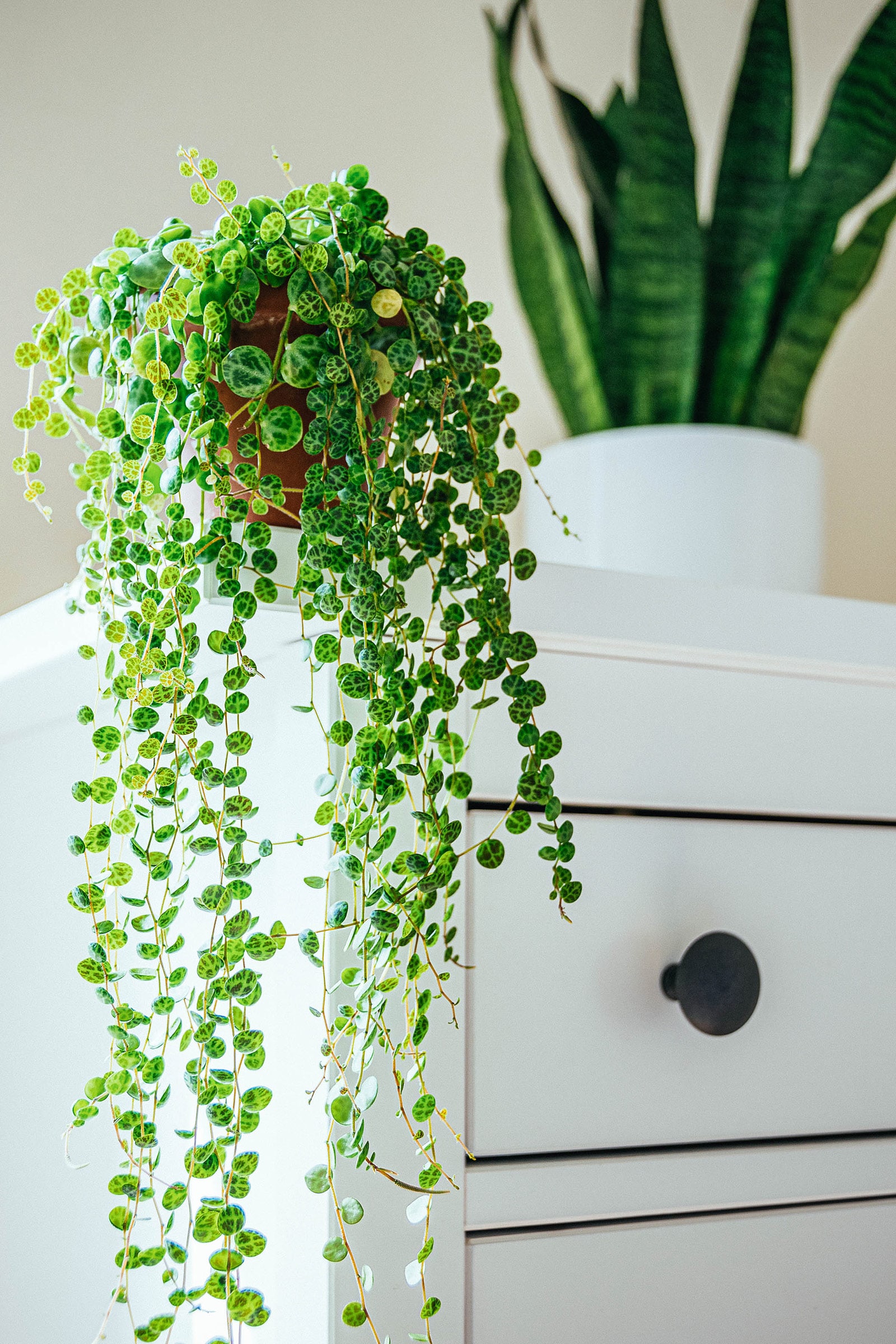
About string of turtles
Natural habitat
Peperomia prostrata is naturally found in South American rainforest habitats, just like many other of our favorite houseplants. Here, it usually doesn’t grow in the soil, but rather as an epiphyte on tree trunks or sometimes creeping across rocky forest floors.
(Other epiphytic houseplants you might know include its cousin, the baby rubber plant, as well as Christmas cacti, Hoya hearts, wax plants, and Anthuriums, which all love to creep and climb in their native habitats.)
Description
This plant is perfectly adapted for hanging from trees and trailing across rocks. It produces long, thin, vine-like stems that are light green to light orange in color. The tangled stems can reach up to a foot in length and are littered with small, button-like leaves. This foliage is fleshy and has the capacity to store water, which is why the species, like many other Peperomias, is considered a “semi-succulent.”
The string of turtles does bloom in the home, producing those typical rat tail-like flowers you’ll find on many popular members of the Peperomia genus. In Peperomia prostrata, they’re a cream green to reddish in color, but they’re really not much to look at.
Rather, what has made the string of turtles so popular is its leaf pattern: dark green with light green to silvery veining reminiscent of a turtle shell.
Will the real Peperomia prostrata please stand up?
As with many of our favorite houseplants, there is some taxonomic confusion out there when it comes to this one. Most plant websites and nurseries list it as Peperomia prostrata, nothing more and nothing less. But if you dig a little into scientific sources, you’ll notice that not all of them accept this name.
Instead, many list it as a synonym for Peperomia rotundifolia. Specifically, the plant we know as ‘prostrata’ is supposedly actually a rotundifolia subspecies officially called Peperomia rotundifolia var. pilosior.
In any case, I’ll keep referring to the string of turtles as Peperomia prostrata here. It may not be scientifically correct, but it’s definitely the name you’ll find it commonly sold under!
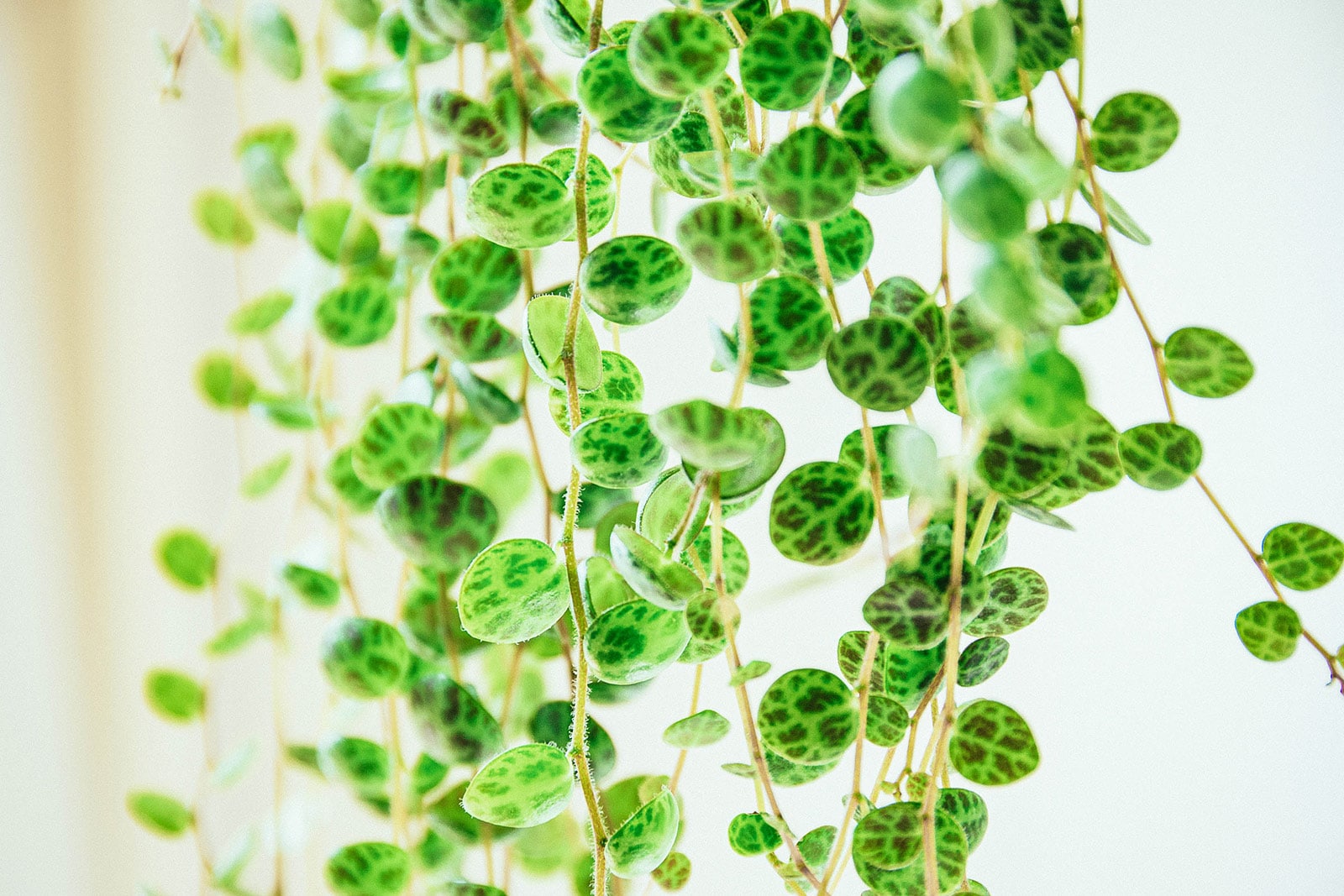
String of turtles varieties
There are loads of different Peperomia plants out there—the genus is estimated to contain some 1,000 species—and the number of hybrids and cultivars is even greater. That’s why the lack of Peperomia prostrata varieties is a little surprising!
It seems variegation very occasionally appears on established plants as a result of a naturally occurring mutation, but it doesn’t look like nurseries have been able to produce or patent any stable lines so far.
The only mention of a string of turtles cultivar made anywhere is about a supposed variety called ‘Magic Marmer,’ but I haven’t been able to find much detail on it.
Where to buy
Peperomia prostrata plants
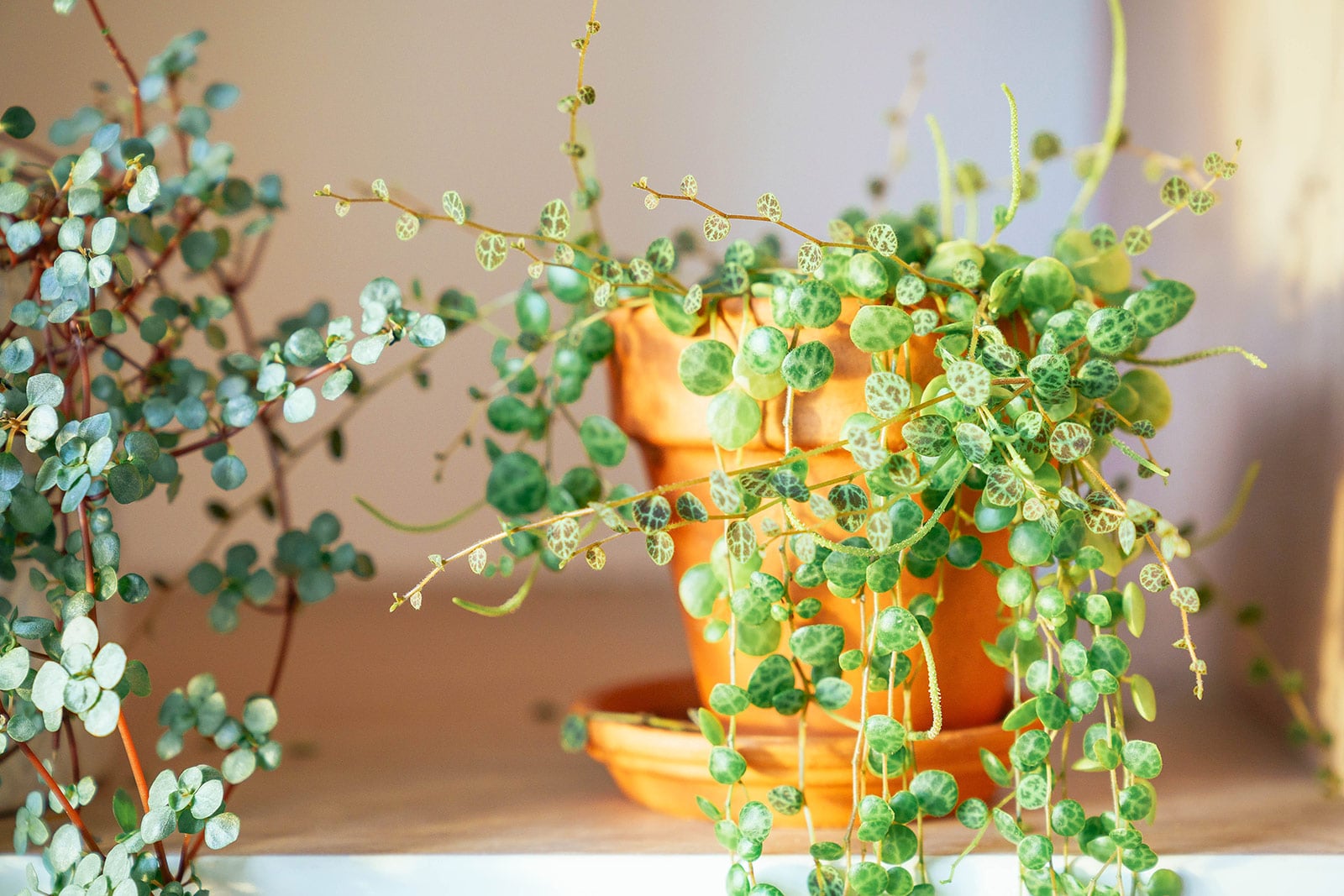
Caring for string of turtles
Light and temperature
Since it naturally grows under the canopies of higher trees in its natural rainforest habitat, the string of turtles plant isn’t used to receiving high levels of direct sun. It does need plenty of light and should be next to a window, but you can save the brightest spots in your home for sun lovers like true succulents.
If you don’t have any windowsill space to offer, remember that Peperomia prostrata also grows absolutely fine under artificial lighting.
Although it isn’t as fussy as some other tropical houseplants, this species still isn’t a huge fan of the cold. It does well at room temperature and won’t have a problem with higher temps either. Just try to keep things above 50°F or your string of turtles may stop growing or even begin to suffer.
Water and humidity
This is one of those funny houseplant species that appreciates high air humidity, but isn’t a huge fan of overly moist soil. Seems like a bit of a contradiction, but remember that with Peperomia prostrata being both an epiphyte (like Syngonium) and a lithophyte (like Tillandsia), its roots just haven’t evolved to be constantly covered with wet soil.
These plants would naturally benefit from frequent jungle rain showers and possibly be in contact with moist moss and leaf litter, but since things are a little more enclosed in a planter, you should water with care. A well-draining soil mix is also important for string of turtles health; more about that in the next section below.
You should let the first few inches of soil dry out before watering again. In fact, in winter, when most houseplants aren’t actively growing, you can let it go about halfway. Just avoid it becoming bone dry: If your Peperomia prostrata’s leaves begin looking wrinkly and deflated, you’ve probably waited too long.
If the leaves show signs of scabbing (referred to as edema) or start to yellow from the base of the stems, it’s likely you’ve overdone it. Keep an eye on your plant if this is the case, as it may be at risk of root rot.
If you’re using a well-draining soil mix, you’ll probably end up watering your plant around twice a week during summer and once a week in the cooler winter months.
As for humidity, its love for high air moisture levels is one of the reasons this is a popular plant choice in the terrarium world. String of turtles are not as finicky as some tropical houseplants (prayer plant, anyone?), but if your home tends to be on the dry side, it may be a good idea to run a humidifier to keep things above 40 percent at least.
Soil and planting
If, like most of us, you grow your string of turtles in a normal planter (as opposed to draped over rocks or wood in a terrarium for a more natural set-up), good drainage is the key to a healthy plant. This should be reflected in the soil mixture you use.
It doesn’t need a medium quite as airy as true succulents—which are sometimes grown in gritty material only—but it will definitely appreciate the addition of some elements that help excess water flow out of the planter freely.
Everyone has their own preferred mixtures, and what works best for you depends partly on factors like light and watering habits. However, a basic potting soil for Peperomia prostrata and many other drainage-loving houseplants could consist of:
- 70 percent regular houseplant soil
- 15 percent perlite
- 15 percent fine orchid bark
You can also use a premade soil-based succulent medium if you don’t feel like mixing your own.
In terms of planting, there are a few different choices. As mentioned before, you can grow this species in a (plant) terrarium, draping it over rocks or wood to leave it to anchor however it likes on its own. If you choose to go this route, you can disregard the soil instructions above and just follow normal terrarium soil guidelines. After all, you won’t really be covering up the roots anyway.
If you prefer a normal pot, the most popular choice would be a hanging one that allows the long stems to trail down.
Recommended
Potting supplies
Fertilizing
The string of turtles is not a heavy feeder, but if yours is doing well, you can give it a little boost using some diluted normal liquid houseplant fertilizer every month or so during the growing season. Consider a weaker dilution than listed on the bottle, as this species is a little sensitive to overfertilization.
Don’t use plant food during the winter months or if the plant is struggling, or you risk damaging its roots.
Recommended
Fertilizers
Pruning
A Peperomia prostrata doesn’t tend to need pruning except to remove any dead leaves. If the vines do grow too long for your liking, just head to the section on propagation to find out how to use any stems you prune to grow brand new plants.
Dividing or repotting
To be honest, dividing or repotting is not often needed. Peperomia prostrata is not a quick grower nor does it get very large, which means it can usually go a good while without repotting. If yours does outgrow its current container or if you’d like to refresh the soil (which is handy to do every two to three years), spring is the best time.
Division is not something commonly done with this species either, since if you wanted to create new plants, the stem cutting method (described below) is an absolute breeze. Still, you could take your string of turtles out of its pot to separate a few rooted strings and pot them up separately if you’d like to.
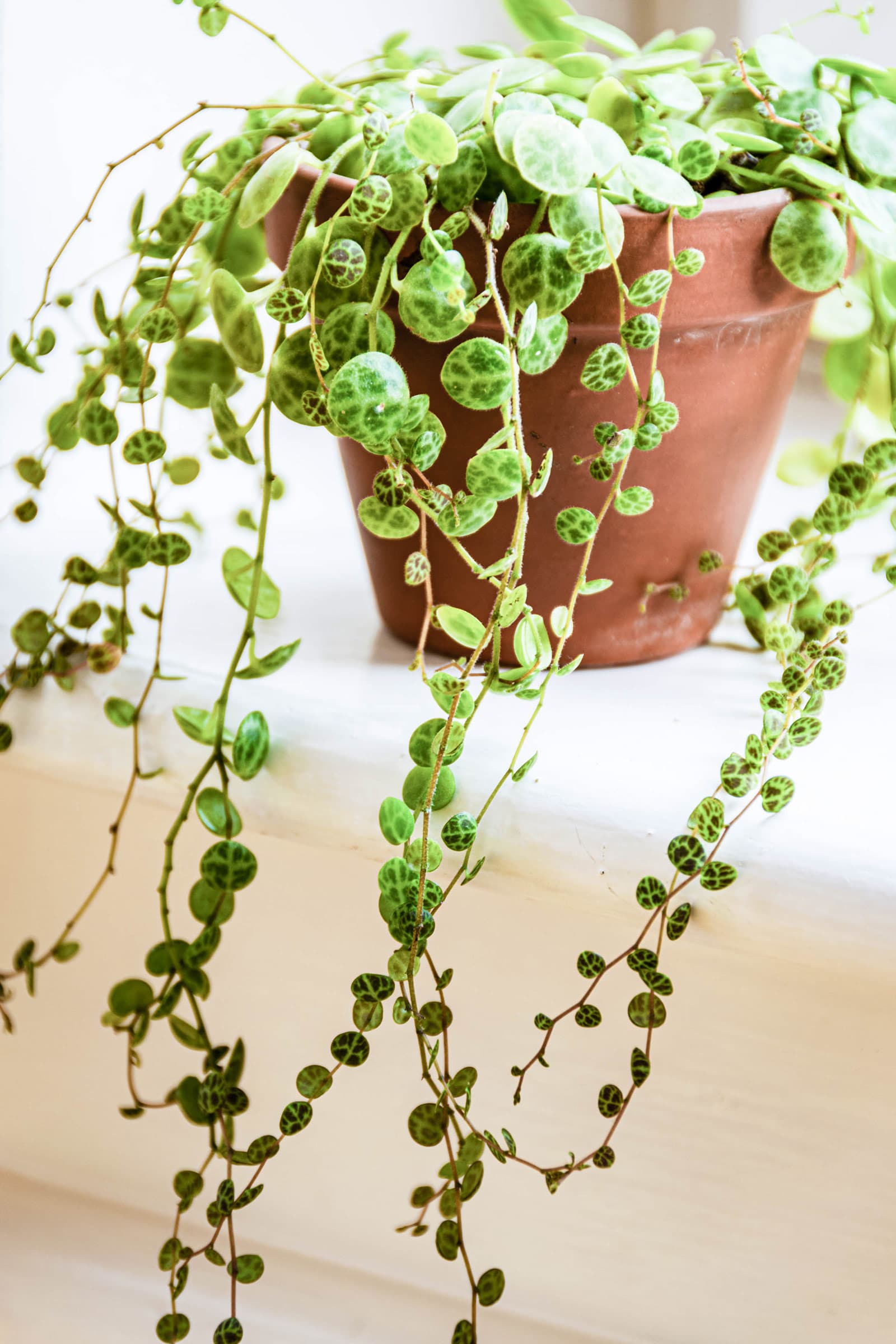
Propagating string of turtles
As mentioned above, a string of turtles plant that consists of multiple stems (which is pretty much always the case), can be multiplied through the division method. The advantage of this is that your new plant will already be rooted.
Still, division isn’t really the most common string of turtles propagation method, mainly because stem cuttings are very easy to root. You can cut 2-inch sections with a few leaves off any string and root them as follows:
- In water: Place in a (shot) glass with water and set the whole thing in a bright, warm spot that doesn’t receive direct sun. Pot up once roots are an inch or two long, which can take a few weeks to a few months depending on the season.
- In soil: Dip in rooting hormone (optional) and place in a planter with normal Peperomia prostrata soil. You can boost humidity and growth by keeping the new plant(s) in a domed germination tray or even just in a clear plastic bag until they’re established.
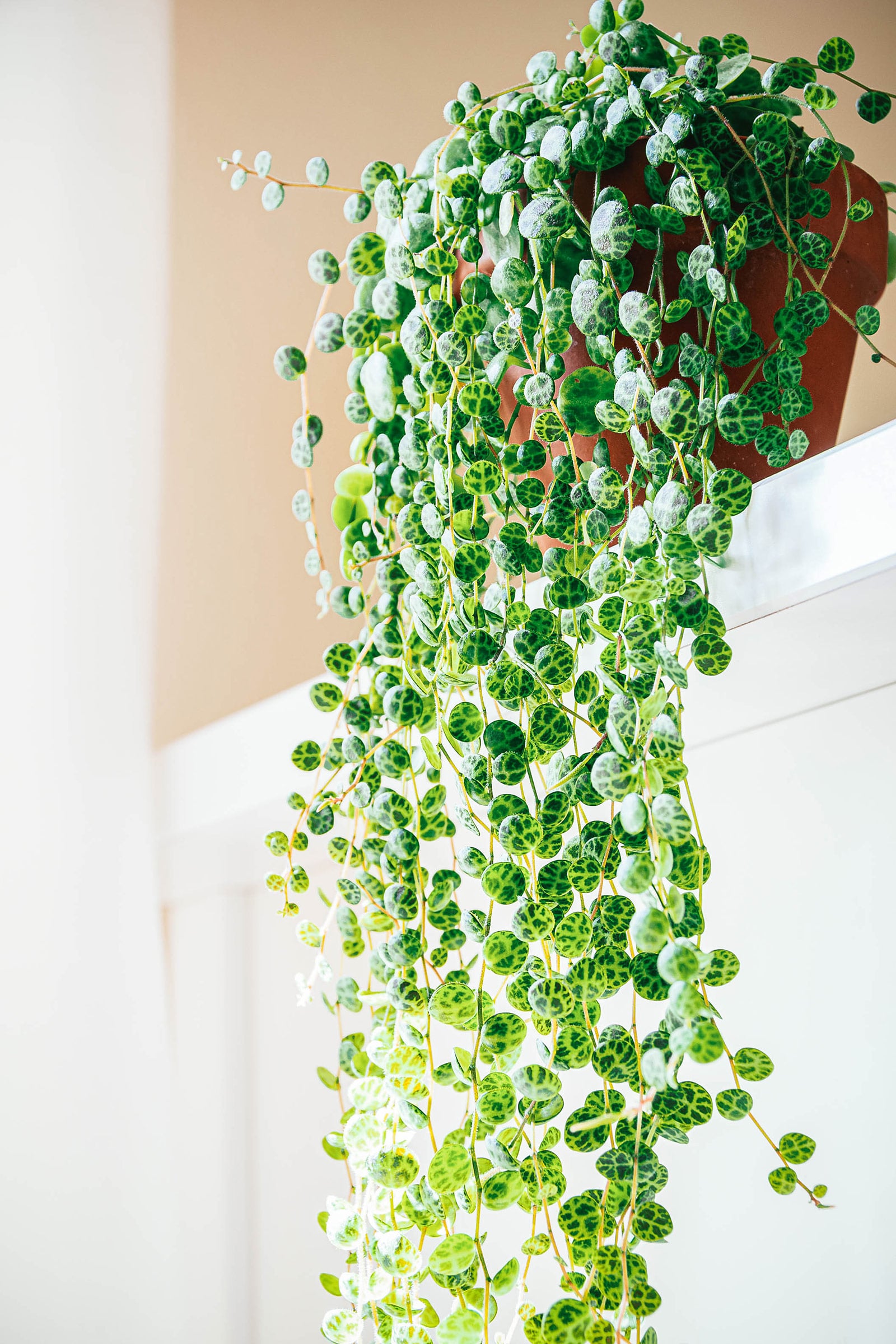
















If I lay the vine on the soil surface, rather than let it hang over the side, will it root along the stem? I imagine that it would do so and grow extra branches along the stem as an added bonus.